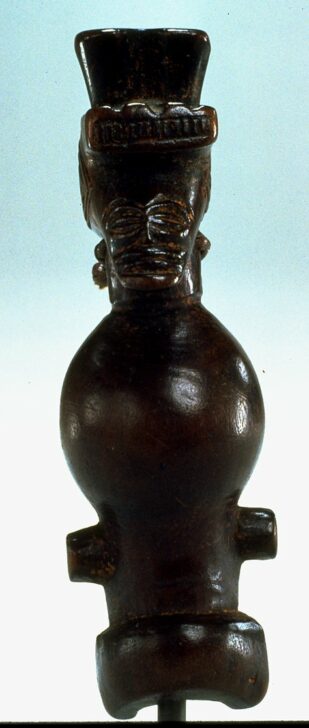Whistle
Chokwe

Description
The Jokwe carved their hunting whistles to be functional, portable works of art. Jokwe hunters arranged the whistle's high-pitched notes into a simple code, which they used to summon their companions or call their dogs. A cord was strung through a hole, visible here on the neck of the tiny carved head, so the hunter could wear the whistle.
Subject Matter:
Up until the mid-20th century, whistles such as this were used during the hunt to communicate with fellow hunters and dogs. The whistle is carved as an anthropomorphic representation of an ancestor, a chief or a masked figure and therefore also functions as a status object. The whistle was either worn on a string as a pendant or it was tied to other objects.
Physical Description:
Anthropomorphic whistle with facial features, round torso and two round protrusions extending from the top of the coiffure and from the sides of the torso. The piece is hollow.
Usage Rights:
If you are interested in using an image for a publication, please visit https://umma.umich.edu/request-image/ for more information and to fill out the online Image Rights and Reproductions Request Form.